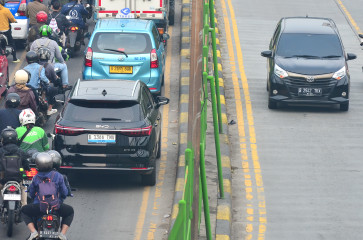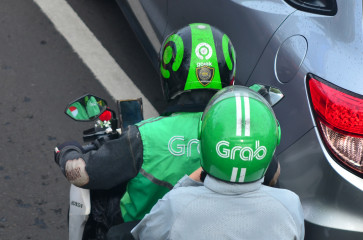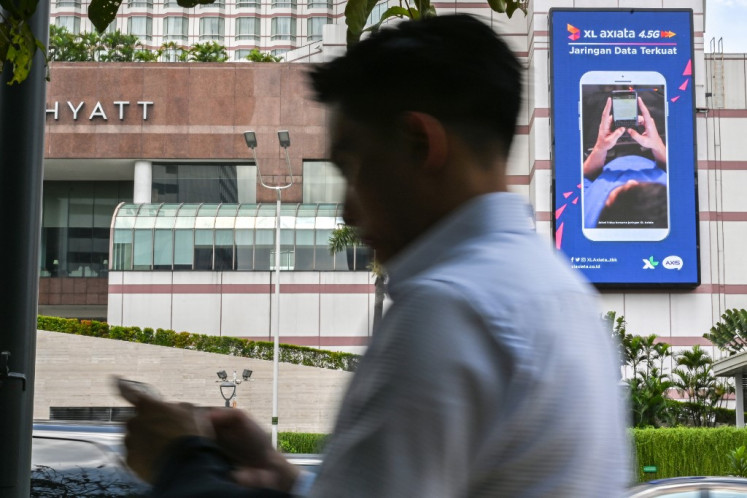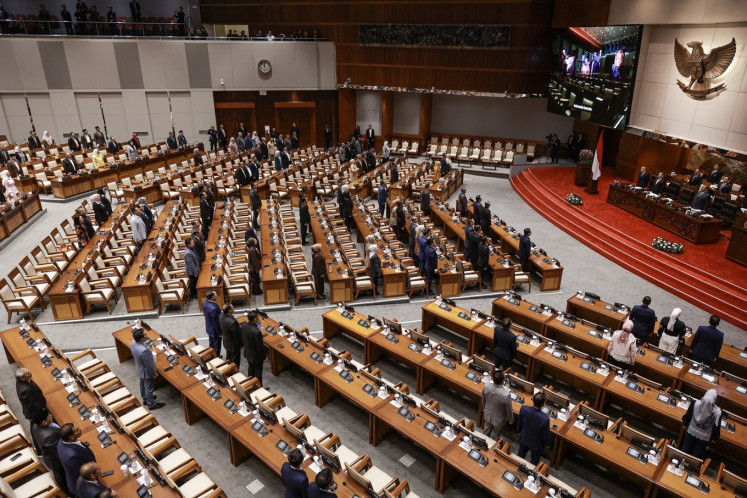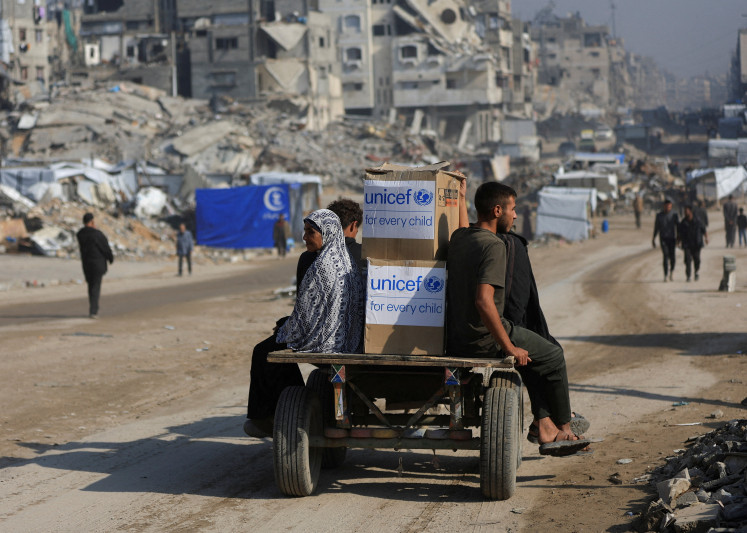Popular Reads
Top Results
Can't find what you're looking for?
View all search resultsPopular Reads
Top Results
Can't find what you're looking for?
View all search resultsJakarta Biennale 2009 takes art to the streets
According to Ade Darmawan, the program director of Jakarta Biennale 2009, every public space in the capital is like an arena, an open area inside a Roman amphitheater where gladiators battle for their lives
Change text size
Gift Premium Articles
to Anyone
According to Ade Darmawan, the program director of Jakarta Biennale 2009, every public space in the capital is like an arena, an open area inside a Roman amphitheater where gladiators battle for their lives.
The city's public spaces, he explained, are never free from conflicting interests.
Greenbelts have been turned into parking lots to serve the city's growing number of private vehicles -- many of which are insanely expensive and luxurious -- amid concerns of deteriorating air quality and acute traffic congestion problem.
Sidewalks have persistently been used by street vendors to earn their daily incomes due to uncontrollable urbanization, resulting in recurring evictions, which epitomize the conflict between individuals and the state.
Meanwhile, the bright sky has mostly been covered by tall buildings and wide billboards. We have, as you might seldom realize, been eerily invaded by advertising billboards, the foremost cultural products of capitalism.
"As a source of reflection and inspiration," Ade said, "art is expected to be able to help address that problem."
The Jakarta Biennale 2009 highlights the issue of public space. Titled ARENA, the art event will for the first time since 1968 get out of art galleries and display high quality works of art in public places such as shopping malls, bus stops and parks.
"Thousands of people attend a shopping mall everyday," the event's communication manager, Ukke R. Kosasih, said.
Straying from the tradition of previous biennales, the 2009 biennale, which goes from November 2008 to March 2009, is not confined to visual arts. It consists of various kinds of event, including even film screenings and traditional music concerts.
Far from being elitist, the biennale's program includes a workshop on comic making for inmates at Tangerang's juvenile prison from Nov. 22 to Dec. 4. Their works will be exhibited at Senayan City from Feb. 1 to 7.
The aim is not to exhibit the city's artistic achievements, but to attract as much public attention as possible.
"The biennale is mostly funded by the city budget. We just think that we need to do something that benefits the public as taxpayers as well," Ade said. The cost of the five-month event is about Rp 3 billion (US$270,000).
The event is divided into three sub-thematic categories; zona pemahaman (comprehension zone), zona pertarungan (battle zone) and zona cair (melting zone).
Each zone is a gradual stage that will help the participating artists produce artworks relevant to the chosen theme, and the public to understand the artistic expression of urban problems.
The organizing committee has held workshops involving artists, architects and sociologists to determine the kinds of art to be displayed in public places in the "Specific Sites" and "Billboard" sections.
"We are still negotiating with the city's administration and billboard association to let some of their billboards be used for artistic activities," Ade said.
The billboard art exhibition, where people can view art like they view advertisements from their vehicles, has been postponed until early February 2009, from the initially planned Dec. 15. At the same time, an art exhibition titled "Jakarta 32" will be held at Atrium Senayan City.
The melting zone will begin on Jan. 6 with the opening of an international art exhibition at Galeri Nasional. It will be sidelined by a series of discussions featuring international speakers such as Yason Banal from the Philippines, Thomas Berghuis from Australia, Phil Collins from the UK and Donna Ong from Singapore.
"This will be the first international Jakarta Biennale," Ade said. -- Ary Hermawan


